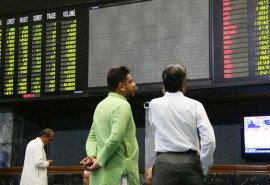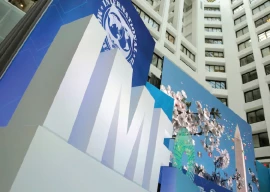
While line losses occur everywhere in the world, the average rate is around seven to nine per cent. KESC, however, loses nearly 34.4 per cent of its electricity in these losses, which are the result of an ineffective distribution system. A one per cent line loss costs around Rs1.6 billion.
In order to make up for these losses, KESC has adopted a policy to use less furnace oil and for this reason, out of six power-generating units at the Bin Qasim Thermal Power Station (BQTPS), only three are being used. Even these units are not operating at their maximum capacity, an engineer working for the company told The Express Tribune.
The stats on KESC
After it was nationalised in 1952, KESC was then privatised in 2005 and first the Saudi-based investors, Al Abraaj, and then UAE-based Al Jumaiya Group took administrative control of the utility.
The decision to privatise the company was made in order to improve its generation capacity. Al Abraaj had committed to bringing an immediate investment worth $500 million.
The engineer said that six of the BQTPS’s key power-generating plants, with 210-megawatt capacity each, were handed over to the existing management at the time of privatisation. One of them has been shut for maintenance while another is often out of order. The remaining four units do not operate at a capacity higher than 95 megawatts.
He said that KESC has twin-cycled turbines but it mainly uses natural gas because it is cheaper. However, ever since it has been privatised, KESC has always been demanding more natural gas. The government has twice increased the supply so that it can save money on furnace oil.
Gas supply, however, has been dwindling, especially with the arrival of winter and consequently the furnace oil bill increased, after which the federal government offered a subsidy worth Rs7.5 million to help pay for the furnace oil consumption.
He said that the demand for electricity in Karachi is around 1,900MW and the shortage is around 500MW. KESC is receiving 400MW from BQTPS and they could easily get another 500MW from the units if they were not worried about saving money on furnace oil.
KESC also gets around 1,400MW from different sources, including 650 to 750MW from Pepco. Its other contributors are independent power producers (IPPs). The two major IPPs, Tapal Tea Company and Gul Ahmed Textile Mills, have a 126MW capacity each and in the past they had been selling KESC around 120MW.
Other power contributors are DHA’s Co-Gen Power Plant that supplies 85MW, Pakistan Steel Mills which supplies 16MW (only during evening hours), Site Rental Power Plant 30MW and the Karachi Nuclear Power Plant (KANUPP) 80 to 85MW, the engineer informed.
KESC Labour Union president Usman Baloch said that the management was using less furnace oil to save money. Moreover, they were also facing difficulties because gas supply was less than normal.
KESC People’s Union general-secretary Lateef Mughal also said that KESC was producing less electricity from its own resources. It had also lowered the amount of electricity that it was buying from private producers.
According to KESC, the city’s demand was 2,100MW and the total injection of electricity into its system was 1,650 to 1,700MW. Electricity from IPPs was 220MW and since Kanupp and the DHA Co-Gen were off the grid, due to maintenance and other issues, there was a shortage of around 160MW.
Published in The Express Tribune, November 26th, 2010.
1732071267-0/lana-(2)1732071267-0-405x300.webp)
1727242355-0/Diddy-(1)1727242355-0-165x106.webp)

1732063440-0/elon-(3)1732063440-0-165x106.webp)













COMMENTS
Comments are moderated and generally will be posted if they are on-topic and not abusive.
For more information, please see our Comments FAQ